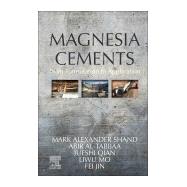- ISBN: 9780123919250 | 0123919258
- Cover: Hardcover
- Copyright: 6/2/2020
With portland cement and cementitious building products (currently used in over 95% of cement applications) consuming vast quantities of natural resources, constitutse a large proportion of industrial waste and currently represent about 5% of anthropogenic global CO2 emissions, there is an urgent need for innovative, creative, cost-effective and sustainable approaches to reduce the tremendous environmental impact of conventional cement-based technology and applications. Magnesia cements offer one alternative, with a unique set of properties that set them apart from the conventional Portland based cements, such as superior strength, fire resistance, and exceptional ability to bond to a wide range of aggregates. Sorel cement as well as some magnesium compounds and minerals also have the ability to react with atmospheric carbon dioxide and effectively sequester it via carbonation. This will have obvious appeal as carbon dioxide sequestration is currently center stage as an environmental concern. This reference handbook provides detailed analysis of the chemistry, properties, manufacture and the classical and new uses for magnesia cements. The focus is on Sorel cement (magnesium oxychloride), magnesium oxysulfate and magnesium phosphate cements. The work is ideally suited for materials scientists, cement chemists and ceramicists researching related subjects at academic institutions, and beyond materials research, for any academic working with construction and remediation, cement clinker, novel cement systems (sustainability), hydration and durability, thermodynamic modeling, waste management, and hydrate characterization. Research engineers working on any aspect of cement systems with environmental impacts will also be highly interested. Formulary information aids research into more environmentally-friendly cement systems Property chemistry discussion aids chemical phase analysis and improves impact of formulation Applications analysis and history of global uses provides support for future environmentally stable industrial, building, and non-building applications







